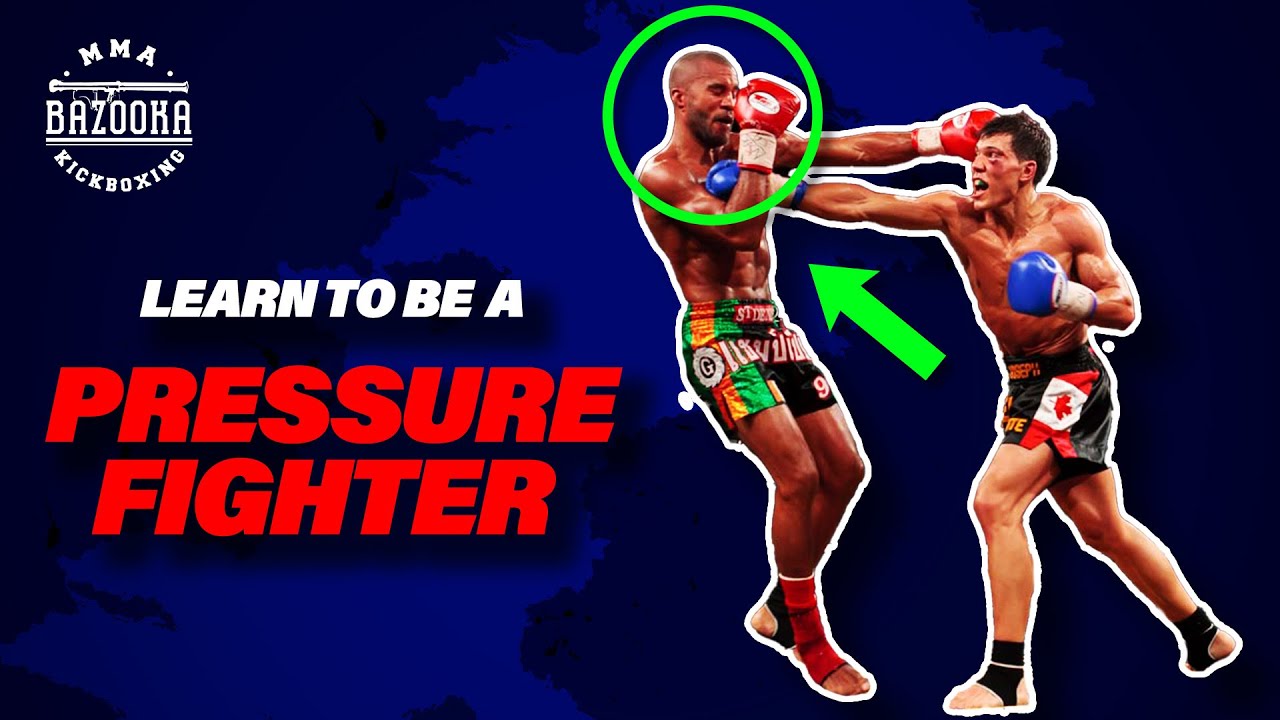In the exhilarating world of Mixed Martial Arts (MMA), pressure fighting is a dynamic strategy that keeps your opponent on the back foot, driving them to make mistakes and ultimately securing your path to victory. “Pressure Fighting Techniques in MMA” delves into the intricacies of this aggressive fighting style, teaching you how to dominate the octagon with relentless pursuit and tactical finesse. You’ll uncover essential techniques like cutting off the cage, feints, and clinch work that can transform your approach to the sport, making you a more formidable and commanding fighter. Whether you’re a seasoned athlete or just starting out, mastering these techniques will not only elevate your game but also provide you with the confidence to face any opponent head-on.
Pressure Fighting Techniques In MMA
Have you ever watched a Mixed Martial Arts (MMA) match and marveled at how some fighters are always right in their opponent’s face, leaving them nowhere to go? If you have, then you’ve witnessed the beauty and effectiveness of pressure fighting. This technique is not just about relentless forward movement but also about strategy, conditioning, and mental toughness.
In this article, we’re going to dive deep into the world of pressure fighting in MMA. You’ll learn why it’s such an effective approach, the various techniques you can use, and how to develop the stamina and mental fortitude needed to implement this style successfully. Ready? Let’s get into it!

What is Pressure Fighting?
Pressure fighting, in the context of MMA, is a style that focuses on constant aggression and forward movement to overwhelm your opponent. Unlike counter-striking, which waits for the opponent to make a move, pressure fighting forces the opponent to react, often leading to mistakes and openings.
Why Choose Pressure Fighting?
There are several reasons to adopt a pressure-fighting style. Firstly, it keeps your opponent on the defensive, limiting their ability to mount an effective offense. Secondly, it can mentally break an opponent who is not prepared for relentless aggression. Finally, it allows you to control the pace and location of the fight, dictating where and when engagements happen.
Physical Conditioning: The Bedrock of Pressure Fighting
Before diving into techniques, it’s crucial to understand that pressure fighting demands exceptional physical conditioning. You must be able to maintain a relentless pace for as long as the fight lasts, which can be incredibly taxing on your cardiovascular system and muscles.
Cardiovascular Fitness
To keep up the pace, you’ll need to focus on your cardiovascular fitness. This involves:
- High-Intensity Interval Training (HIIT): Short bursts of intense activity followed by brief rest periods.
- Long-Distance Running: To build an endurance base.
- Circuit Training: Combining multiple exercises targeting different muscle groups to improve overall stamina.
Strength and Conditioning
Aside from cardio, being physically strong is vital for maintaining control in close-quarters.
- Weightlifting: Focus on compound lifts like deadlifts, squats, and bench presses.
- Bodyweight Exercises: Push-ups, pull-ups, and planks to build functional strength.
- Plyometrics: To increase your explosiveness and agility.
Mental Toughness: The Unsung Hero
Physical conditioning is essential, but mental toughness is equally crucial. Pressure fighting isn’t just physically demanding; it also requires you to stay focused and aggressive even when you’re tired or hurt.
Building Mental Toughness
- Visualization: Visualize scenarios where you’re tired but still pushing forward.
- Mindfulness Techniques: To stay in the moment and not get discouraged by setbacks.
- Sparring: The best way to build mental toughness is through consistent sparring, particularly with partners who can push you.
Core Techniques in Pressure Fighting
Let’s explore some of the core techniques you’ll need to master to become an effective pressure fighter.
Footwork
While it might seem like pressure fighting is all about charging forward, footwork is crucial. Maintaining the correct distance to strike while avoiding counters is key.
Types of Footwork in Pressure Fighting
| Type | Description |
|---|---|
| Shuffle Step | Quick, short steps to maintain pressure while staying ready to evade. |
| Cutting Angles | Shifting direction to off-balance the opponent and create openings. |
| Side Stepping | Moving laterally to avoid straight-line attacks. |
Striking
Constant striking keeps your opponent on the defensive. The type of strikes you use can vary, but combinations and volume are critical.
Effective Strikes for Pressure Fighters
| Strike | Advantages & Tips |
|---|---|
| Jabs | To keep your opponent off balance and gauge distance. |
| Hooks | Ideal for close quarters and targeting the opponent’s head and body. |
| Uppercuts | Perfect for catching your opponent when they come forward. |
| Leg Kicks | To slow down your opponent and limit their mobility. |
Clinch Work
Being comfortable in the clinch is vital for a pressure fighter. It allows you to control your opponent and set up strikes or takedowns.
Clinch Techniques
| Technique | Description |
|---|---|
| Muay Thai Clinch | Controlling the opponent’s head to land knees and elbows. |
| Wrestling Clinch | Staying close to your opponent to secure takedowns. |
| Hand Fighting | Controlling wrists and arms to prevent strikes and setup counters. |

Defensive Techniques in Pressure Fighting
While pressure fighting is inherently aggressive, you can’t neglect your defense. A good defense allows you to continue your onslaught while minimizing the risk of getting hit.
Guard Positioning
Your guard positioning will determine how well you can absorb or deflect incoming strikes.
| Guard Type | Advantages |
|---|---|
| High Guard | Protects your head but can make you vulnerable to body shots. |
| Peek-a-Boo Guard | Good for absorbing strikes and countering quickly. |
| Philly Shell/Shoulder Roll | Effective for slipping punches but requires advanced skills. |
Head Movement
Moving your head off the centerline can make it difficult for your opponent to land clean shots.
Head Movement Techniques
| Technique | Description |
|---|---|
| Slipping | Moving your head to one side to avoid straight punches. |
| Bob and Weave | Using a downward motion to go under punches, often setting up counter strikes. |
| Duck and Pivot | Ducking under a punch while pivoting to change angles. |
Transitional Techniques
Transitioning from one phase of fighting to another seamlessly is what separates good fighters from great fighters.
Takedown Pressure
Using your forward momentum to secure takedowns can be a game-changer.
| Takedown Type | Description |
|---|---|
| Double Leg Takedown | Grabbing both legs and driving forward. |
| Single Leg Takedown | Targeting one leg to unbalance the opponent. |
| Trip Throw | Using your legs to trip your opponent while controlling their upper body. |

Combining Techniques for Effective Pressure Fighting
Mastering individual techniques is great, but the real magic happens when you combine them effectively. Transitioning between strikes, clinches, and takedowns smoothly can overwhelm even the toughest opponents.
Combination Examples
- Jab-Cross Combination into a Double Leg Takedown: Initiate with strikes to get your opponent on the back foot, then shoot for the legs.
- Hook-Uppercut Combination into Muay Thai Clinch: Strike to close the distance, then control the head to land devastating knees.
- Leg Kick into Overhand Right: Use the leg kick to disrupt your opponent’s balance before coming over the top with a punch.
The Importance of Adaptability
While pressure fighting is about aggression, being overly predictable can be your downfall. Adaptability is key.
Adapting During a Fight
- Reading Your Opponent: Learn to read your opponent’s reactions. Are they comfortable countering your strikes or do they prefer to clinch?
- Switching Strategies: If your initial game plan isn’t working, be prepared to switch it up. This could mean focusing more on takedowns or changing your striking combinations.
- Momentary Retreats: Sometimes, taking a step back to lure your opponent in can create new opportunities to pressure forward again.

Mental Strategies in Pressure Fighting
We’ve talked about physical and technical elements, but let’s not forget the psychological game.
Psychological Techniques
- Intimidation: Constantly moving forward can make your opponent feel cornered and suffocated.
- Feints and Fakes: These will make your opponent second-guess their reactions, opening them up to real strikes.
- Verbal Pressure: Using verbal cues or even trash talk can sometimes distract or emotionally unbalance your opponent.
Training Methods Specific to Pressure Fighting
Effective pressure fighting requires specialized training routines.
Sparring Drills
- Pressure Sparring: Focus solely on maintaining forward pressure. Don’t worry about getting hit; concentrate on staying aggressive.
- Isolation Drills: Work specific areas like clinch work or ground control.
- Partner Drills: Practice combinations where one partner focuses on countering while the other maintains pressure.
Bag Work
- Heavy Bag: Practice your combinations while moving forward.
- Speed Bag: Improve your hand speed and accuracy.
- Resistance Bands: Attach to your body to simulate an opponent trying to push you back while you move forward.
Shadowboxing
This is a fundamental practice technique and can be tailored for pressure fighting.
| Drill Type | Focus |
|---|---|
| Aggressive Combos | Work on fast, high-volume striking combos. |
| Movement Drills | Focus on footwork while constantly moving forward. |
| Defensive Maneuvers | Incorporate slips, bobs, and weaves to practice defense. |

Case Studies: Iconic Pressure Fighters in MMA
Learning from the best is always helpful. Let’s look at some iconic pressure fighters in MMA and what made them successful.
Cain Velasquez
Known for his relentless cardio and wrestling, Velasquez was a master of blending striking with takedowns to keep his opponents constantly on the defensive.
Tony Ferguson
Ferguson’s unorthodox striking and ground skills, combined with his incredible conditioning, make him a relentless force in the octagon.
Nick Diaz
With high-volume punching and exceptional stamina, Diaz overwhelms his opponents through sheer output and relentless forward movement.
Common Mistakes and How to Avoid Them
Every fighting style has its pitfalls. Here are some common mistakes pressure fighters make and how to avoid them.
Overcommitting
Overcommitting to strikes or takedowns can leave you vulnerable to counters.
Solution: Always be prepared to pull back or change angles if an opening isn’t there.
Lack of Head Movement
Staying in a straight line can make you an easy target.
Solution: Incorporate constant head movement into your training to become a harder target to hit.
Ignoring Defense
Focusing solely on offense can lead to eating unnecessary strikes.
Solution: Integrate defensive drills into your regular training routine.
Poor Conditioning
If you can’t maintain the pace, pressure fighting becomes ineffective.
Solution: Regularly incorporate high-intensity cardio and strength training into your regimen.
Final Thoughts
Pressure fighting in MMA is a high-risk, high-reward style that demands exceptional conditioning, technical skill, and mental toughness. By mastering the techniques outlined here, you’ll be well on your way to becoming a formidable pressure fighter who can dictate the pace and outcome of any bout.
There you have it! Pressure fighting is a dynamic and challenging approach, but with the right training, you can implement it effectively in your next match. Whether you’re a seasoned fighter or just getting started, these techniques will give you valuable tools to add to your MMA arsenal. So, lace up those gloves, get to training, and remember—keep the pressure on!

